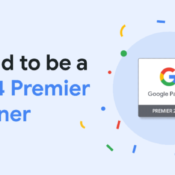/
/
What you SHOULD Be Getting From Analytics
During a meeting with a potential client last week, I asked what kind of reporting their current website provider offers. He pulled out a copy of the Google Analytics report they receive each month. The report had some very basic data such as visits, traffic sources, top five keywords and which web browsers the visitors were using.
This is both disappointing and exciting. It’s disappointing because the client deserves to know more than this useless top-level data (web browsers, really?) and their top five keywords included nothing but their brand name. It’s great that their brand name is popular but wouldn’t it be more interesting to see what product or service specific keywords they were getting visits for?
More importantly, it’s exciting because it’s a great opportunity to educate this client on what the Google Analytics data means, and how he can use it to improve his website’s performance. Without the right kind of data from your website, how can to determine whether your work it is actually helping or hurting your business?
It’s so much more valuable to know how much time people are spending on your site, or what pages they are visiting or leaving the site from. This type of data is what helps make decisions about your site that help increase sales. We believe and say all of the time that your website should not just be an online brochure but an active part of your sales team. You likely spent a lot of money on it and it is important that it is providing value to your business.
So, what types of information should you be getting and paying attention to from your website analytics program? There are many different things to look at depending on what type of site you have but here are a few suggestions for Google Analytics users:
Visitors Overview
This is a great place to start as it shows you how much traffic your site is getting for a given date range. You can compare how much traffic you’re getting monthly or weekly, along with the number of pages a visitor sees per visit
Goals and Conversion Rate
To effectively use Google Analytics you need to set up Goals in your account. This could include a visitor reaching a certain page, downloading something, filling out a contact form or making a purchase. When a goal is achieved, it is considered a Conversion. Google analytics will display a conversion rate which is simply the number Conversions (goal completions) divided by number of visitors to your site.
Bounce Rate
The definition of bounce rate is the number of people who leave your website without visiting any additional pages on the site. This basically means that someone visited your site and left right away. There are many different reasons for someone bouncing from your site and it is important to know which pages they are bouncing from so that you can improve that page and turn that visitor into new lead or customer.
Traffic Sources
Knowing how visitors reach your website is very important, especially if you are doing any type of ongoing SEO, social media or content production. Observing your websites Traffic Sources will help you measure the success of those efforts. In this example, the most popular sources are Google, direct traffic (typing in the URL) and Yahoo.
Top Content
The Top Content report shows you which pages people are viewing the most. This is a great way to understand how people are navigating through your website. This can also help you with making sure you have a strong call to action to help convert that visitor in to a new lead or customer.
Organic Search Traffic
Not only should you see where people are coming to your site from, it’s important to know what they are searching for when they find you. In this example, the keyword “buy something cool” attracted 7,189 visitors to this particular website. The keywords you see were made up to keep our client data confidential.
This is just scratching the surface on the data available in Google analytics but if you look at information from these six reports, you are off to a good start. More detailed and custom reports are things you should advance once you start implementing paid search, SEO or other forms of advertising that drives traffic to your website.
Feel free to chime in on the comments with your thoughts or experiences with these reports. Let us know if you think we are missing anything or if there are other reports you find valuable.
Tags:google analytics
Recent Posts
Mudd Advertising
Let’s leverage!
Mudd Advertising
Politics Schmolitics!
Mudd Advertising
Mudd has been promoted to Google Premier Partner
All Categories
Tags
anonymous website visitor identification
automotive
branding
cable
case study
chevrolet
chevy
data
digital marketing
direct marketing
display
dynamic inventory display
facebook
first party
google
google analytics
google premier partner
internet marketing
local seo
Matthew Moody
media
mobile search
mobile seo
MUDDid
online marketing
online video
organic
organic search
pay per click
political
ppc
promotion
retargeting
search engine marketing
search engine optimization
sem
seo
social advertising
social media
social media marketing
strategy
traditional marketing
traditional media
Volunteer Spotlight
youtube




